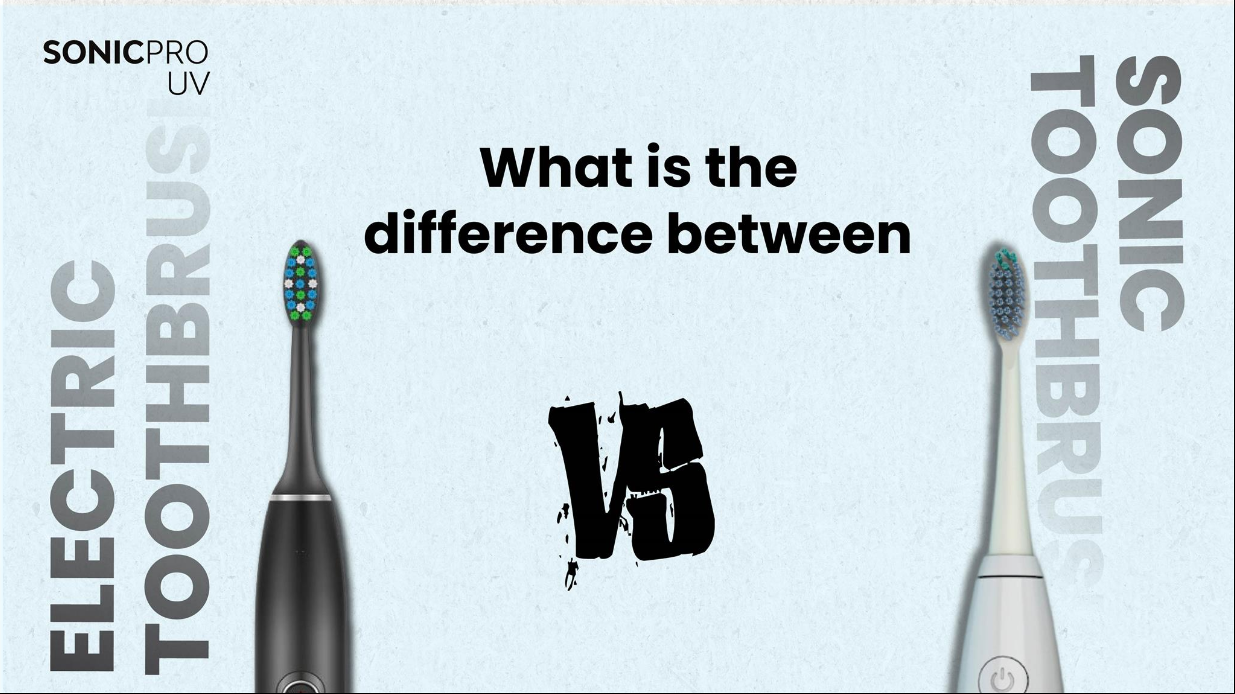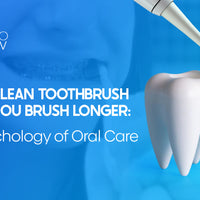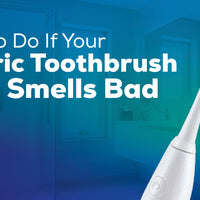Choosing between an electric toothbrush or a sonic toothbrush can be a pivotal decision in your oral care routine. With both options designed to improve dental hygiene significantly, understanding their differences is essential for making an informed choice. In this article, we will dive deeper into the features, benefits, and considerations for both types of toothbrushes, helping you determine which one is best suited for your needs.
1. ⚙️ Mechanism of Action
1.1 Electric Toothbrushes
Electric toothbrushes have become increasingly popular in recent years, primarily due to their efficiency in plaque removal compared to manual brushes. These brushes operate using a motor that powers the bristles to move in specific patterns, such as oscillating or rotating. The motion created by the brush head effectively removes plaque and food particles from the teeth.
Electric toothbrushes can vary significantly in terms of features. Some models are equipped with pressure sensors to prevent excessive force on the gums, while others come with timers to ensure users brush for the recommended two minutes. The versatility of electric toothbrushes caters to various user preferences, making them a practical choice for many.
The ease of use associated with electric toothbrushes cannot be overlooked. They are particularly beneficial for those with limited mobility or dexterity, allowing for a more effective clean without the physical strain of manual brushing. Additionally, many users find the automatic movement of the brush head more satisfying and thorough, which can lead to improved compliance with regular brushing habits.
1.2 Sonic Toothbrushes
Sonic toothbrushes take dental hygiene a step further by utilizing high-frequency vibrations that create sonic waves to disrupt plaque and bacteria. These brushes produce an impressive 30,000 to 40,000 brush strokes per minute, which not only enhances plaque removal but also aids in better gum health. The sonic waves generated by these brushes create a fluid dynamic effect that allows the brush to clean more thoroughly between teeth and along the gum line.
An essential aspect of sonic toothbrushes is their ability to create microbubbles that help in cleaning hard-to-reach areas. This technology not only makes brushing more effective but also promotes a fresher feeling in the mouth. Many sonic toothbrushes come with various modes, such as gentle, whitening, or gum care, allowing users to customize their brushing experience to suit their specific dental needs.
Sonic toothbrushes also tend to have longer battery life compared to traditional electric toothbrushes. Many models offer up to two weeks of usage on a single charge, making them a convenient option for those who travel frequently. With a sonic toothbrush, users can enjoy the benefits of superior cleaning while reducing the hassle of recharging.
2. 🧼 Cleaning Efficiency
2.1 Plaque Removal
When it comes to plaque removal, sonic toothbrushes often take the lead. Studies have consistently shown that the high stroke count and fluid dynamics of sonic technology can reduce plaque more effectively than standard electric toothbrushes. The rapid vibrations break down plaque and bacteria, leading to healthier teeth and gums. This efficiency is especially crucial for individuals with a history of gum disease or those who are prone to plaque buildup.
Moreover, the unique cleaning motion of sonic toothbrushes allows them to reach areas that traditional electric brushes might miss. The sonic waves penetrate between the teeth and along the gum line, enhancing overall oral hygiene. Regular use of a sonic toothbrush can contribute significantly to long-term dental health, making it an investment worth considering.
In contrast, electric toothbrushes, while effective, may not achieve the same level of plaque removal. They still outperform manual brushes, but if plaque buildup is a primary concern for you, a sonic toothbrush may be the better option.
2.2 Gum Health
Gum health is another area where sonic toothbrushes shine. The gentle vibrations of sonic technology can stimulate blood circulation in the gums, potentially leading to improved gum health over time. Enhanced gum circulation can help in reducing inflammation and the risk of gingivitis, making sonic toothbrushes an ideal choice for individuals focused on comprehensive oral care.
Electric toothbrushes, while still beneficial for gum health, may not provide the same level of stimulation. However, many users find that electric toothbrushes help maintain their gum health when used consistently. Ultimately, both types of toothbrushes can contribute to healthy gums, but if gum stimulation is a primary concern, a sonic toothbrush may be the superior option.
3. 🛠️ User Experience
3.1 Ease of Use
Both electric and sonic toothbrushes offer a significant advantage over manual brushing in terms of ease of use. However, the experience can differ:
- Electric Toothbrushes: These brushes require users to guide the brush head along each tooth. While this requires less effort than manual brushing, users still need to actively participate in the brushing process. Many electric toothbrushes feature ergonomic designs that make them comfortable to hold, but the necessity for manual guidance can be a drawback for some.
- Sonic Toothbrushes: With sonic toothbrushes, users can enjoy a more hands-free experience. The high-frequency vibrations allow users to simply hold the brush against their teeth without needing to apply pressure or guide it actively. This ease of use can be particularly beneficial for individuals with limited mobility or for those who prefer a more effortless brushing experience.
3.2 Comfort and Sensitivity
Comfort is an essential consideration when choosing a toothbrush, especially for those with sensitive teeth or gums. Sonic toothbrushes often feature softer bristles and gentler modes, making them suitable for individuals who experience discomfort with firmer brushes. The sonic technology is designed to provide a thorough clean without harsh scrubbing, making it an ideal option for users who prioritize comfort.
Electric toothbrushes can vary widely in terms of bristle hardness and movement intensity. Some users may find that specific electric brushes can be too harsh, especially if they have existing dental work or sensitive gums. It's crucial to choose a model that matches your comfort level to ensure an enjoyable brushing experience.
4. 💸 Cost Considerations
4.1 Price Range
When budgeting for a toothbrush, it’s essential to consider both the initial purchase price and ongoing costs associated with replacements. Electric toothbrushes can range from $20 to $150, depending on features and brand. In contrast, sonic toothbrushes typically start at around $50 and can go up to $300 or more, particularly for high-end models.
While the upfront investment in a sonic toothbrush may be higher, many users find that the benefits justify the cost. The advanced cleaning technology and features often lead to better oral health outcomes, which can reduce long-term dental expenses.
4.2 Replacement Brush Heads
Both electric and sonic toothbrushes require replacement brush heads, which contribute to ongoing costs. Sonic toothbrush heads tend to be slightly more expensive than those for standard electric brushes, so it's essential to factor this into your budget. Typically, you should replace the brush head every three months, and knowing the cost of replacements can help you determine the overall long-term investment for each type.
Additionally, some brands offer subscription services for brush head replacements, which can make maintaining your oral hygiene routine more convenient. It’s worth researching different brands and their pricing structures to find the best fit for your needs.
5. 🏁 Final Thoughts
In conclusion, both electric and sonic toothbrushes have their merits, and the best choice ultimately depends on your individual needs, preferences, and budget. Here are some key takeaways:
- Electric Toothbrushes are suitable for those looking for an efficient cleaning method without breaking the bank. They offer various features that enhance the brushing experience, making them a popular choice.
- Sonic Toothbrushes provide advanced cleaning technology, making them ideal for individuals focused on plaque removal and gum health. The hands-free experience and superior cleaning capabilities can lead to better long-term dental outcomes.
Regardless of which option you choose, maintaining a consistent brushing routine, combined with regular dental check-ups, is vital for optimal oral health. If you’re considering upgrading your toothbrush, both options provide valuable benefits—so it’s about finding the right fit for you!
For those interested in exploring high-quality options in sonic toothbrushes, check out Buy Sonic Pro for a variety of models designed to enhance your dental care routine and elevate your brushing experience.
Read More Articles:
- 10 Benefits of Using an Electric Ultraviolet Toothbrush
- 5 Reasons Why SonicPro UV is the #1 Electric Toothbrush for Kids
- 5 Surprising Health Benefits of the SonicPro UV Toothbrush
- Manual vs. electric toothbrush: which is better?
- How to Save Money at the Dentist with an Ultraviolet Toothbrush?
- Top Tips for Cleaning Your Electric Toothbrush for Cavity Prevention







